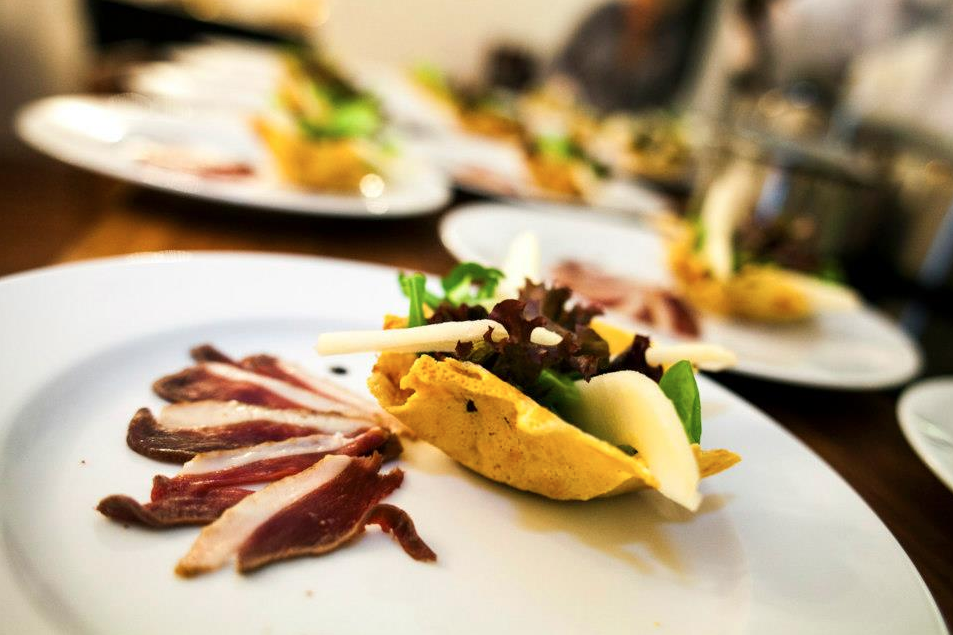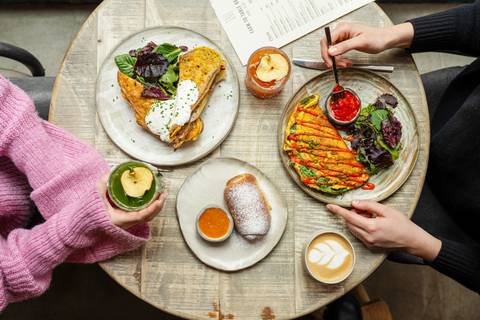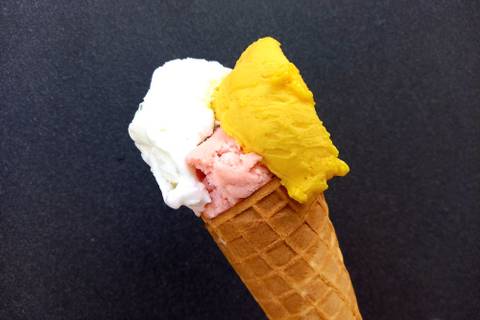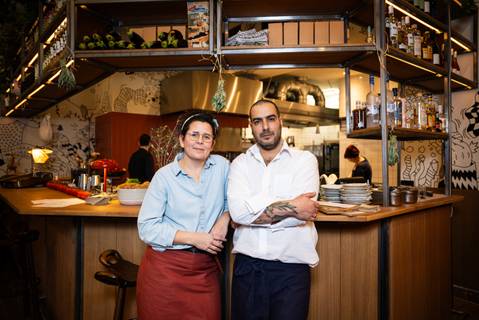Capriccio: according to the original meaning used in music it refers to a piece written in a capricious, impulsive and free way. If we were to interpret it to the language of the 21st century, it means something like airy, oblivious, playful and improvising. So something that makes you smile, that aims at your senses in a way that you don’t even want to fight against it.
Capriccio: an apartment restaurant in the heart of the city, in Palazzo Dorottya. The building itself is magnificent in its own right. After you enter the huge and elegant wooden gate you feel like you’ve actually been teleported straight to New York. Into The Dakota, for instance, on the corner of 72nd and Central Park West, which has become a classic building with time.
Slendor, power, sophistication and harmony void of ostentation. All these describe it well. The apartment restaurant linked with the names of Tamás Jenei and Zoltán Magos suits perfectly this type of millieu.Entering the door the New York feeling further intensifies, as the apartment looks like a clever mixture of a penthouse and a loft with its free spaces, eclectically modern, moderate, yet elegant and friendly design. It’s just as exclusive as is required by the environment, and what doesn’t go beyond the boundaries of snobbism in the good sense, or should it be called appreciative fastidiousness? You get the feeling that if Sinatra was still alive, and in Budapest, he’d run a private club like this, and lots of people would want to enter but only a select few would get the chance.This is one of the strong points of Capriccio, this type of exclusivity. And the airy, charming way the two chefs provide it all indeed calls for compliments. Sinatra once more – this is what everybody, us included, likes in him, too. We could even go as far as stating that it’s Costes experience without the slightly distant and embarrassing care for accessories. Just like as it’s promised by the name: improvisingly, playfully and obliviously indeed. And with professional precision, apart from these. After all, the real showbusiness, the genre of entertainment done so unsurpassably by the Americans, is a tough genre: what seems to be laid-back and spontaneous from the outside comes into being after a huge amount of work and thinking – and the same is the case here.
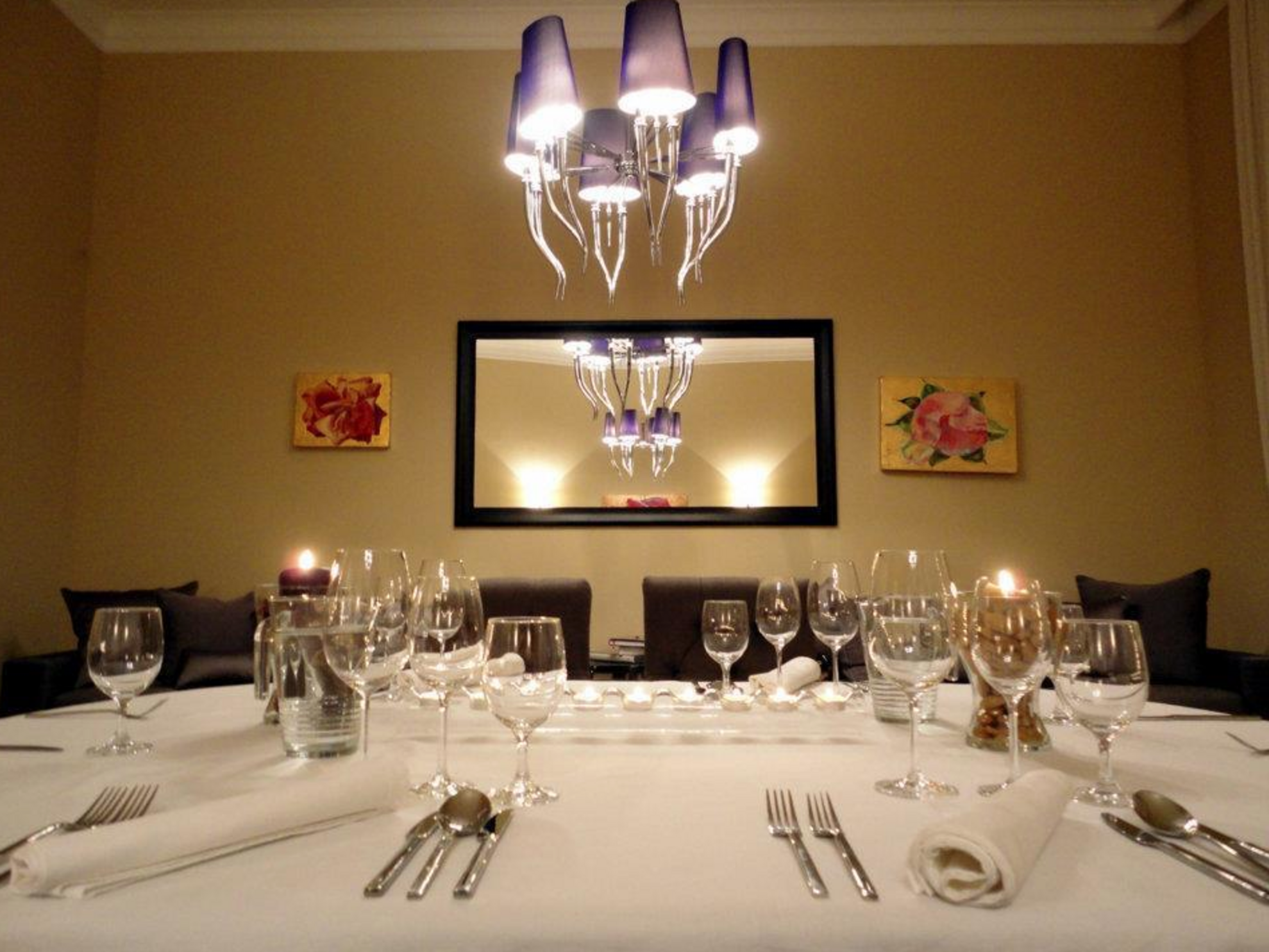
Another strong point of Capriccio is the kind of gastronomic point of view represented by the two well-known chefs. Though you can know them from different TV programs, thus, having an idea of what culinary world they feel most at home in and consider as their own, from this extreme closeness the experience is incomparable. Accessible, unpretentious, and original – all clichés but in a world buzzing with noises of information they might just be important because of their stability as reference points. The thesis, that has been around for millennia even if we forget about it from time to time, is proven once again: food brings people together. And so both during and after dinner we don’t only get a glimpse of the “stylish” trends of culinary technology, all in an understandable, user-friendly way, but we also have a jovial discussion. A discussion about, for example, the excellent, what’s more, let’s risk the expression epoch-making cookbook that was published in Hungary in 1927 (!), a reprint of which can be found in the flat among lots of other fantastic cookbooks in the apartment. It contains everything, indeed everything that gives the colors and flavors of contemporary world cuisine thought trendy and “envied”. This book is there for the taking only to be used – it’s not complicated at all, it’s a good choice by novices and masters alike.
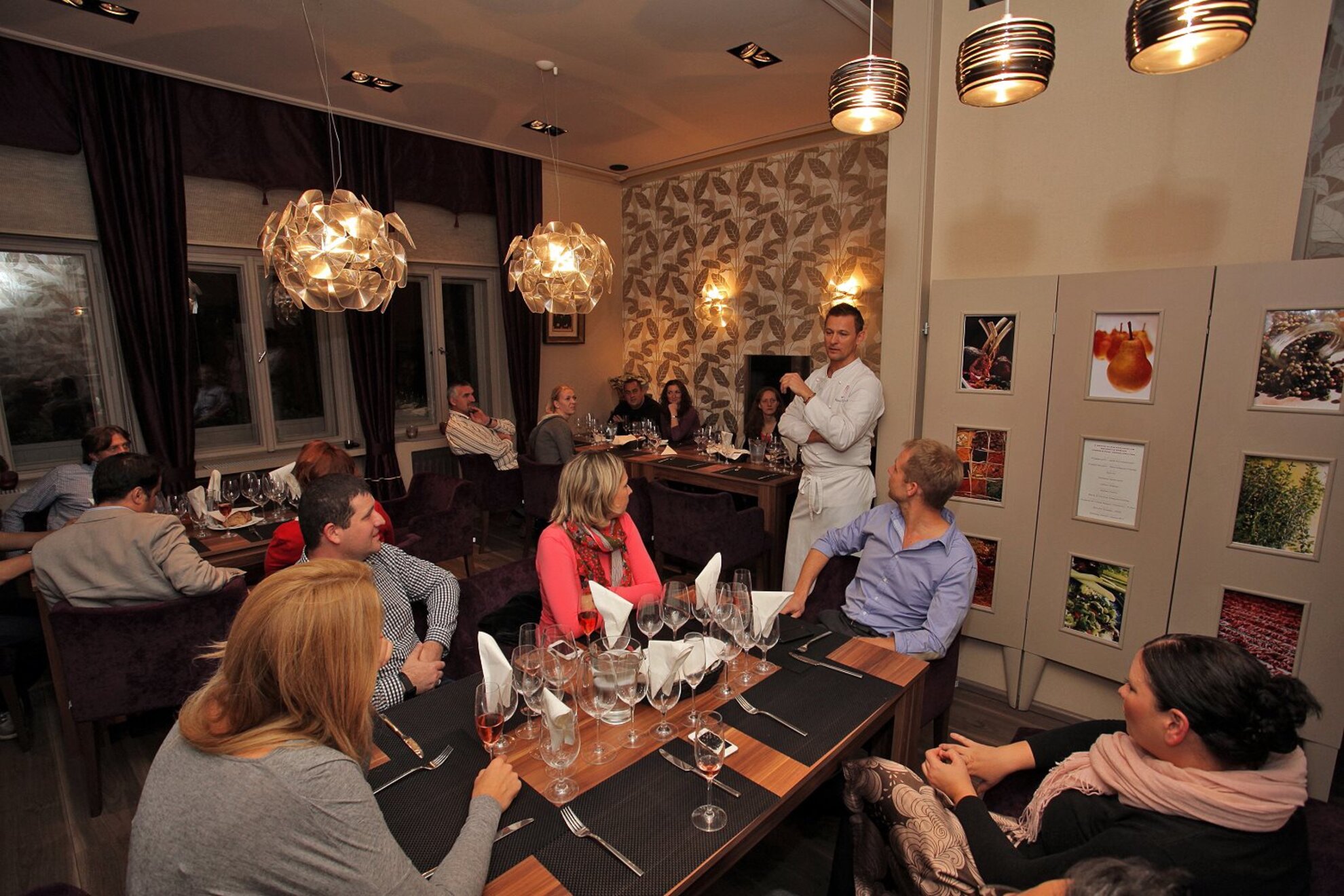
Tamás Jenei and Zoltán Magos compiled a five-course dinner for us which suits the milieu of the building and the apartment, and the capriccio atmosphere, their hallmark of choice. They never cease to provide the same atmosphere that is achieved so clumsily, if at all, in a nearby, much bigger place which is devised to be more elegant, more cosmopolitan.
The horse d’euvres is duck rilettes with freshly made toast, red onion jam made with red wine and thyme, and zucchini stuffed with feta and pine nut. Nothing complicated, nothing to be taken aback by, the dish is characterized by the accentuation of natural flavors, which is nicely complemented by Merfelszék’s blaufränkisch rosé.
Essence of common pheasant soup comes next served with sherry, a little of which could be felt in the soup itself, too, making it more piquant. Though winter’s far away (or so we hope), but the flavors serve as a prelude to it, not provocatively or intrusively but in a friendly way, as if taking us by the hand to lead us on the path to the upcoming course.
The next course is wild piglet lasagne with chocolate pasta and light tomato sauce seasoned with a little cinnamon. This is not complex, either, the two chefs stressed the simple flavors, and the chocolate is more like a visual element than an instrument of defining the character of the dish. Not that it would need to. Bock Merlot is the wine that suits the flavors of tomato and boar meat.
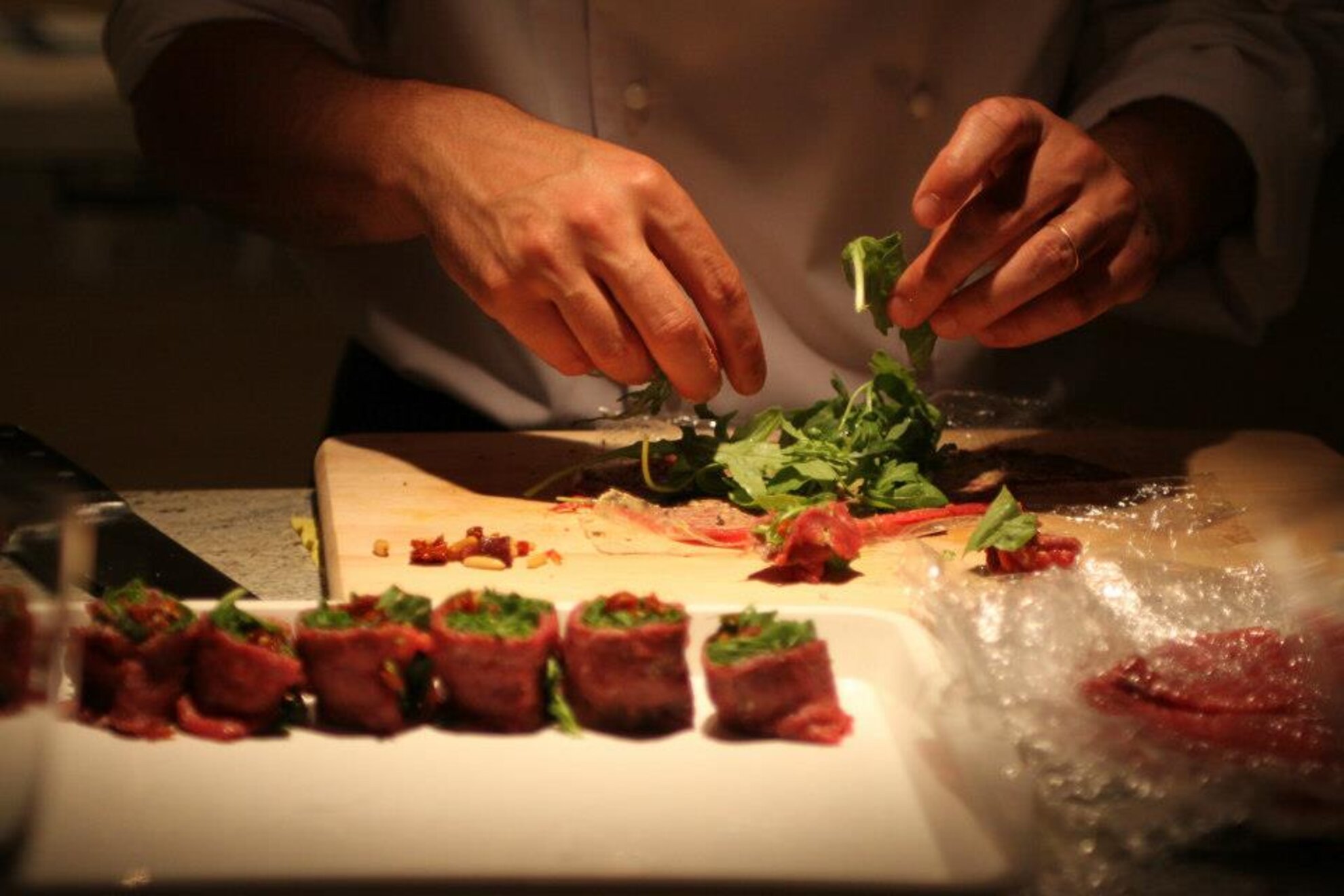
The apex of the dinner, or should I say its solo to be more in line with the cappricio feeling, is the sous vide breast of common pheasant seasoned with sage, and the sous vide saddle of venison with thyme, served with polenta pudding, caramelized chestnut and pear, and some butter sauce prepared with red wine. These flavors also summon the upcoming winter, though with all its warmness, the concealed emotions behind the ruthless truth. Again, without any complications. The accompanying wine is the 2008 unsifted Merfelsz Doppio, a commendable choice indeed.
The dessert is, above all, a light finishing but at least nothing that lies heavy on your stomach: slow baked, flourless cheese cake with Tokaji-must gel, served with the 2008 Kövérszőlő by the Nobilis Winery. It’s elegant, European, and likely that Sinatra himself would’ve appriciated it, too.
It might be apparent by now that Capriccio is a place where elegance, easiness, and innovation reaches such standards that works so perfectly in the better side of the world. They are open to these kind of things there. Let us be open, too, because if you visit Carpaccio, you’ll leave with such experiences that are probably otherwise exclusive to much more expensive places, where the environment is impersonal, and you don’t feel at home. Here, however, you can feel that New York has come for you to show what makes it one of the most colorful cities in the world.
Address:
1122 Budapest, Városmajor Street 48/b
Facebook
